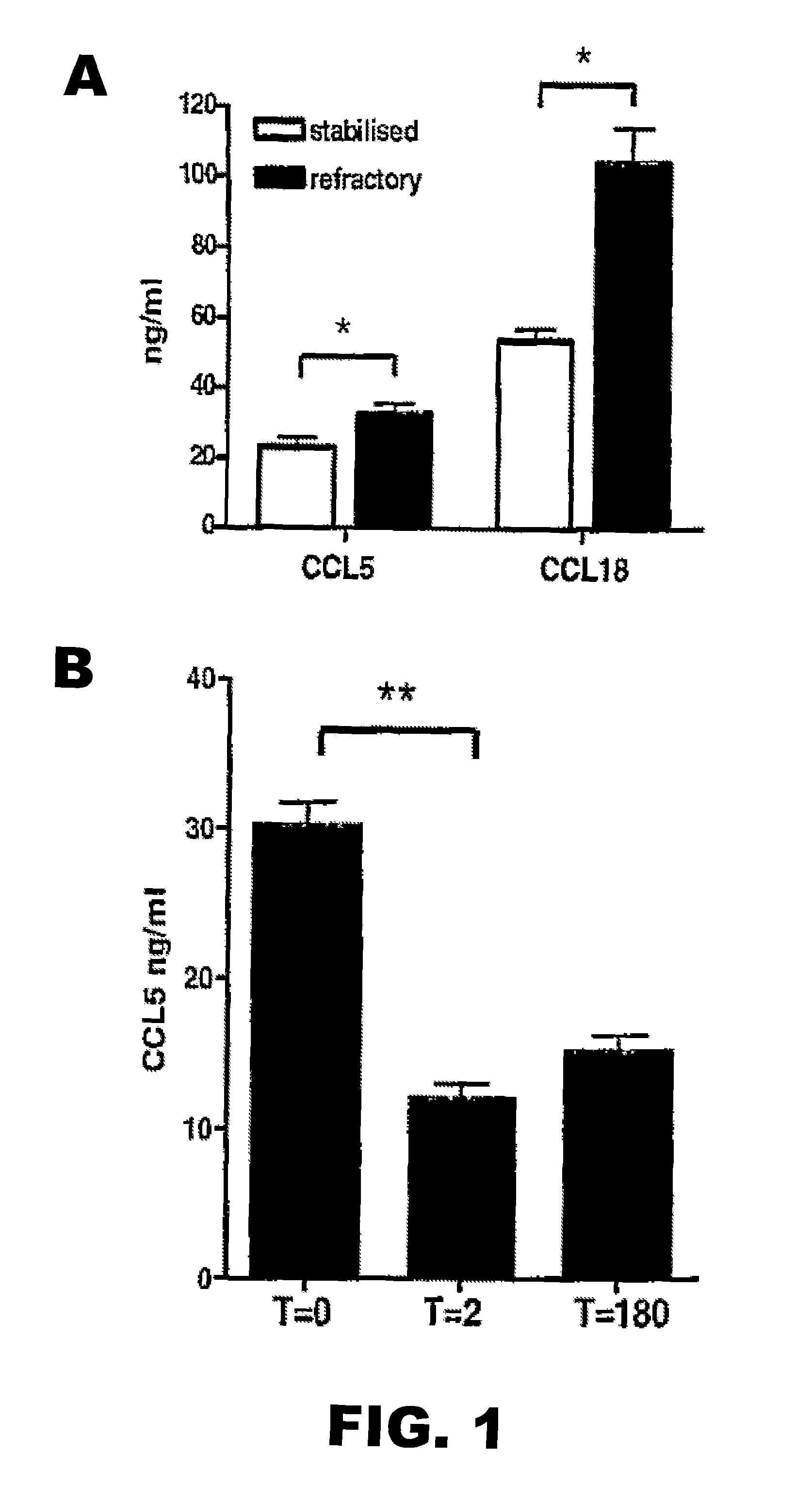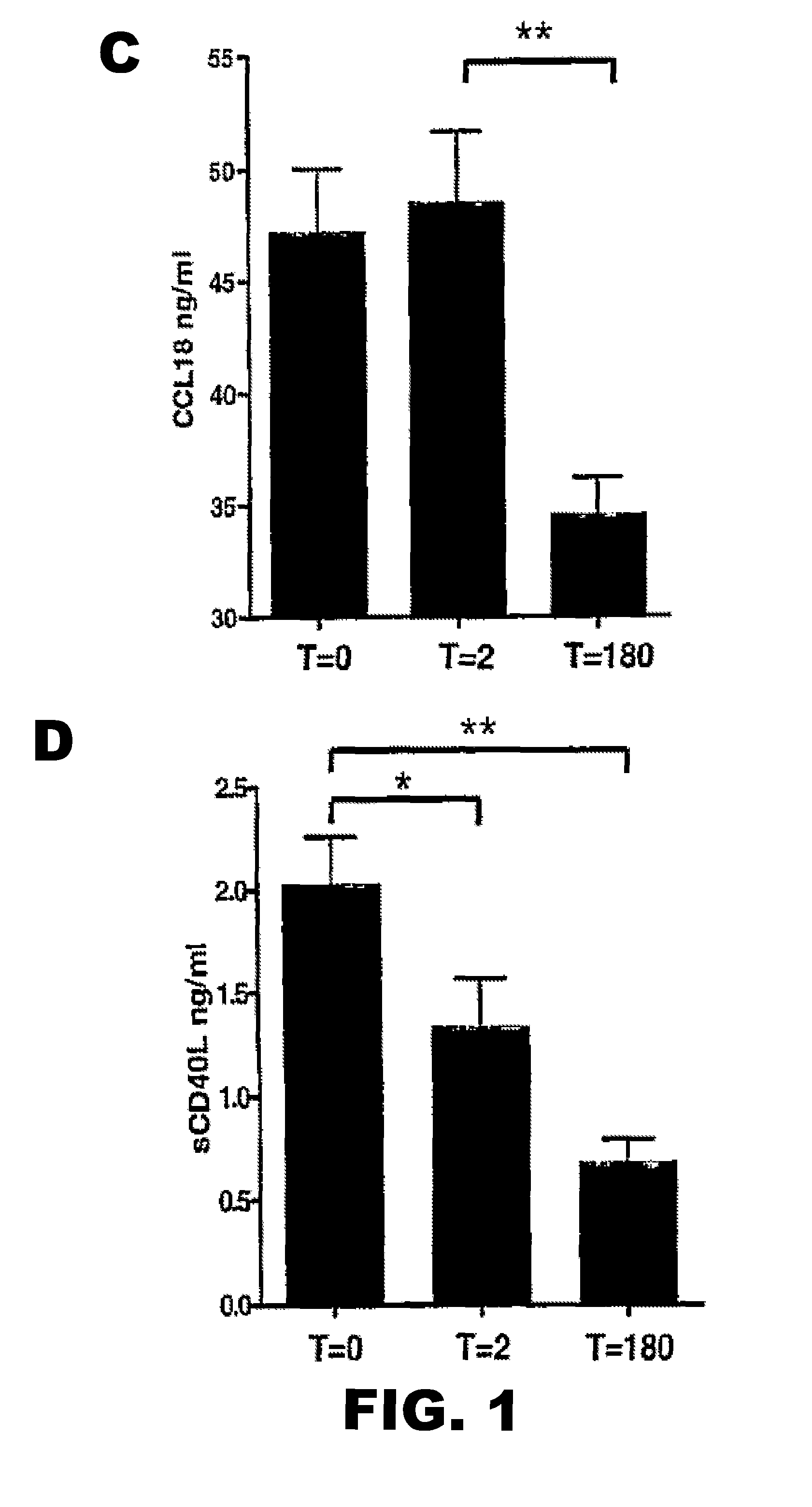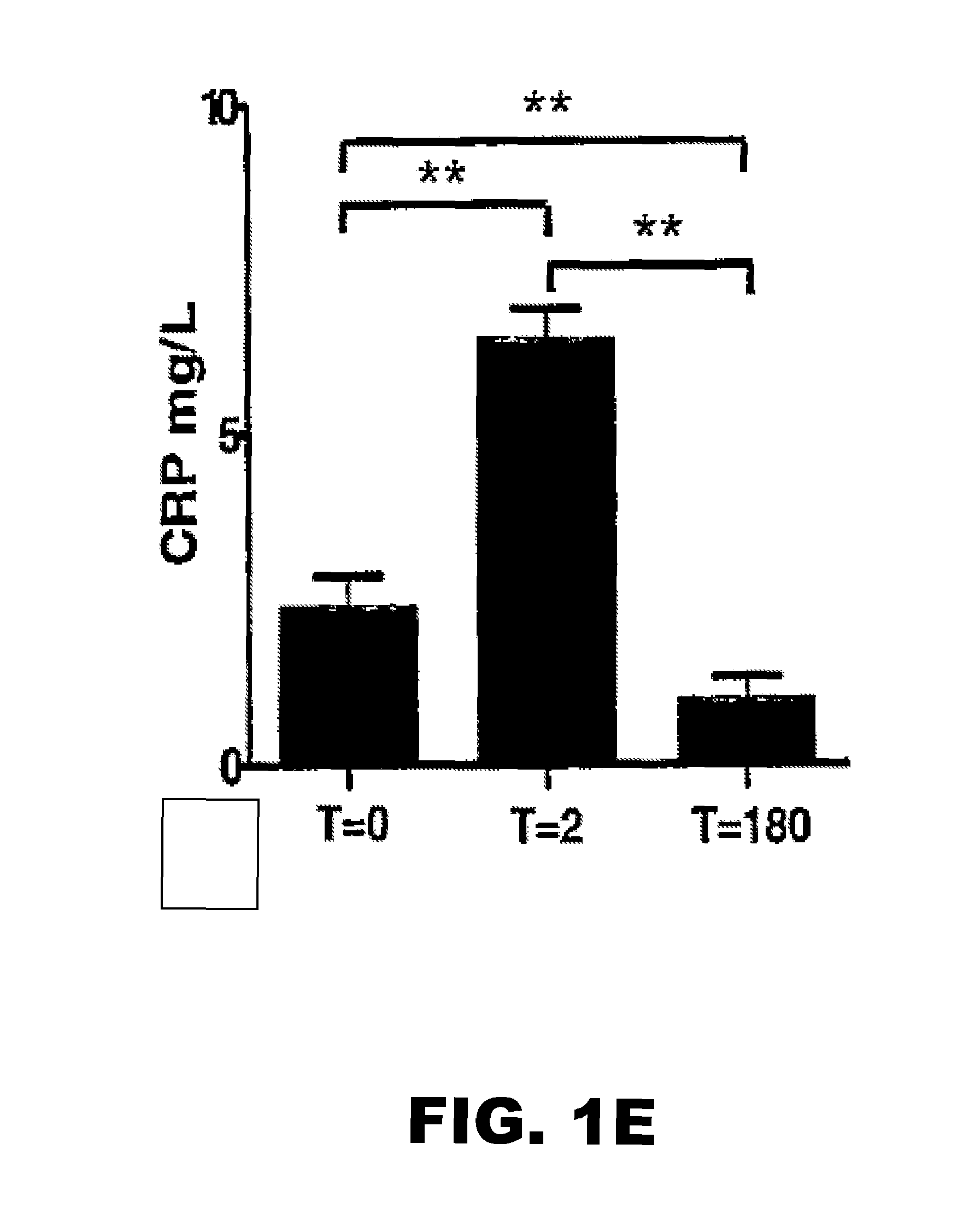Device and method for detection of analytes
- Summary
- Abstract
- Description
- Claims
- Application Information
AI Technical Summary
Benefits of technology
Problems solved by technology
Method used
Image
Examples
example 1
Identifying Biomarkers that have Diagnostic and Prognostic Utility in Alzheimer's Disease (AD)
[0185]ECG and blood tests for electrocardiography, a chest X-ray, monitoring of heart rhythm, blood oxygen level, and blood tests for myocardial markers such as troponin I or T, a D-dimer, ischemia-modified albumin (IMA), Myeloperoxidase (MPO), C-reactive protein, Glycogen Phosphorylase Isoenzyme BB-(GPBB), myoglobin, CK-MB, and BNP may be performed in a cohort of patients complaining of chest pain. The same tests may be performed everyday and cardiac failure may be recorded and treated if and when it occurred. The clinical tests performed on a subset of the patients complaining of chest pain may not produce any positive results, indicating that these tests could not diagnose a cardiac failure. Surprisingly, this subset of patients may develop cardiac failure. In addition, this subset of patients also may have levels of CCL3, CCL18, CCL5 that may be significantly different from the levels o...
example 2
CCL5 (RANTES) and CCL18 (PARC) are Specific Markers of Refractory Unstable Angina Pectoris and are Transiently Raised During Severe Ischemic Symptoms
Methods
[0186]Study Population.
[0187]All chemokines and inflammatory parameters were determined in plasma samples of a patient cohort, derived from the well defined APRAIS (Acute Phase Reaction and Ischemic Syndromes) study. In brief, 54 patients who were admitted to the emergency department of the Leiden University Medical Center between March and September 1995 with unstable angina pectoris Braunwald class IIIB were included and followed for up to 18 months. Venous blood samples were obtained on admission (t=0) after 2 (t=2) and 180 days after admission (t=180), centrifuged and plasma aliquots were stored at −80° C. until further analysis. All patients had received standard medical therapy, i.e. aspirin 300 mg orally, nitro-glycerine intravenously and heparin infusion based titrated to the activated partial thromboplastin time. A clini...
example 3
CCL3 (MIP-1α) Levels are Elevated During Acute Coronary Syndromes and Show Strong Prognostic Power for Future Ischemic Events
Methods
Patient Cohorts
[0234]MISSION.
[0235]Study populations were compiled from the MISSION! intervention study 12. The AMI patient group consisted of 44 patients (54.5% male; mean age 61.8±11.6 years) diagnosed with AMI on the basis of ECG and clinical chemical parameters (elevated troponin and creatine kinase levels). The control group represented 22 non-symptomatic age and sex matched subjects (54.5% male; mean age 61.7±12.8), not suffering from manifest coronary artery disease (Table 5). Baseline blood samples of AMI patients were taken within 2 hours after hospitalization and within 6 hours upon onset of AMI. Patients suffering from autoimmune disease, malignancies, chronic inflammatory diseases as rheumatoid arthritis or receiving immunosuppressant or chemotherapy were excluded from the study. This study was approved by the local ethics committee and all ...
PUM
| Property | Measurement | Unit |
|---|---|---|
| mass | aaaaa | aaaaa |
| volume | aaaaa | aaaaa |
| concentrations | aaaaa | aaaaa |
Abstract
Description
Claims
Application Information
 Login to View More
Login to View More - R&D
- Intellectual Property
- Life Sciences
- Materials
- Tech Scout
- Unparalleled Data Quality
- Higher Quality Content
- 60% Fewer Hallucinations
Browse by: Latest US Patents, China's latest patents, Technical Efficacy Thesaurus, Application Domain, Technology Topic, Popular Technical Reports.
© 2025 PatSnap. All rights reserved.Legal|Privacy policy|Modern Slavery Act Transparency Statement|Sitemap|About US| Contact US: help@patsnap.com



